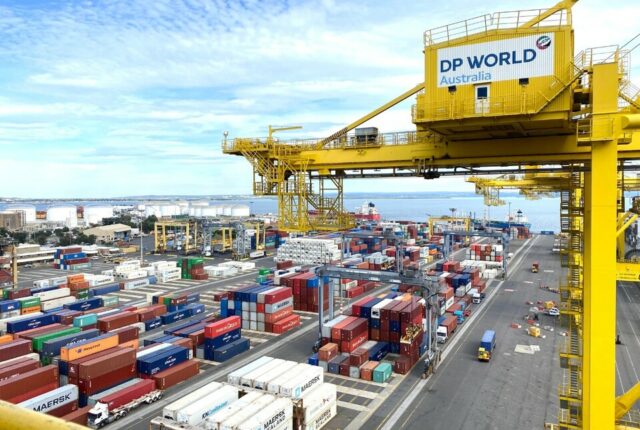
Air Freight Safety: Mitigating Risks in Transportation
Air freight plays a crucial role in global trade and logistics, providing swift and efficient transportation of goods across vast distances. However, ensuring the safety of air freight is of paramount importance to maintain a secure and reliable supply chain. By mitigating risks and implementing appropriate safety measures, companies can protect their cargo from damage, loss, or theft. In this article, we will explore the various aspects of air freight safety and discuss key strategies to mitigate risks during transportation.
Air Freight Safety: Mitigating Risks in Transportation
Air freight safety involves a comprehensive approach to minimizing potential risks associated with the transportation of goods by air. By addressing these risks, stakeholders in the supply chain can maintain the integrity of their cargo and safeguard against financial losses. Let’s delve into some essential measures and practices that contribute to air freight safety.
- Understanding Regulatory Requirements
Compliance with international regulations is vital for air freight safety. Regulatory bodies such as the International Civil Aviation Organization (ICAO) and the Transportation Security Administration (TSA) set standards to ensure the security and safety of air cargo. Familiarize yourself with the applicable regulations and requirements to meet the necessary guidelines.
- Cargo Screening Procedures
Proper cargo screening is crucial to identify potential security threats and prevent unauthorized items from being transported. Employ screening methods such as X-ray scanners, explosive detection systems, and canine teams to ensure thorough inspections. Adhering to the recommended screening protocols mitigates the risk of dangerous or prohibited items entering the air freight supply chain.
- Packaging and Labeling Standards
Adhering to packaging and labeling standards is vital for air freight safety. Properly packaged and labeled cargo reduces the likelihood of damage during handling and allows for efficient identification and tracking. Ensure packaging materials provide adequate protection and use standardized labels for clear identification and handling instructions.
- Risk Assessment and Management
Conducting thorough risk assessments is a proactive approach to identify and manage potential hazards in air freight transportation. Evaluate factors such as cargo value, vulnerability to theft or damage, and environmental risks. Implement risk management strategies to minimize the likelihood and impact of identified risks.
- Security Training and Awareness
Investing in security training and fostering awareness among employees is instrumental in ensuring air freight safety. Train staff members on recognizing and responding to security threats, emphasizing the importance of adherence to established protocols. Regularly update training programs to align with evolving security measures and industry trends.
- Supply Chain Security Collaboration
Collaboration among stakeholders in the supply chain is crucial for comprehensive air freight safety. Establish strong relationships with freight forwarders, airlines, and handling agents to ensure effective communication and coordination. Sharing relevant security information enhances the ability to detect and address potential risks throughout the transportation process.
- Technology Integration
Leveraging advanced technologies can significantly enhance air freight safety. Explore the implementation of track-and-trace systems, tamper-evident seals, and electronic cargo monitoring. These technologies provide real-time visibility into the location and condition of the cargo, allowing for prompt detection of any anomalies or deviations from the planned route.
- Emergency Response Preparedness
Being prepared for emergencies is essential to minimize the impact of unforeseen events on air freight transportation. Develop and communicate emergency response plans that outline procedures to follow in the event of security breaches, natural disasters, or other emergencies. Regularly test and update these plans to ensure their effectiveness.
- Insurance Coverage
Maintaining appropriate insurance coverage is a critical aspect of managing risks in air freight transportation. Evaluate your insurance policies to ensure they adequately protect your cargo against potential losses. Consult with insurance experts to understand the coverage options available and make informed decisions to mitigate financial risks.
- Continuous Improvement and Evaluation
Air freight safety is an ongoing process that requires continuous improvement and evaluation. Regularly assess the effectiveness of implemented measures and identify areas for enhancement. Stay informed about industry advancements and emerging risks to proactively adapt your strategies and stay ahead of potential threats.
FAQs (Frequently Asked Questions)
Q1: What are the main risks associated with air freight transportation? The main risks associated with air freight transportation include cargo damage, loss, and potential delays.
Q2: What role do regulations play in the safeness of air freight? Regulations establish standards and guidelines to ensure the security and safety of air cargo. Compliance with these regulations is vital to protect cargo and maintain a secure supply chain.
Q3: Why is risk assessment important in the safeness of air freight? Risk assessment allows you to identify potential hazards and vulnerabilities in air freight transportation. By assessing risks, you can implement appropriate measures to mitigate their impact and protect your cargo.
Q4: How can technology enhance the safeness of air freight? Technology integration, such as track-and-trace systems and electronic cargo monitoring, provides real-time visibility and enables prompt detection of anomalies or deviations from the planned route. This enhances the overall safety and security of air freight transportation.
Q5: What should I do in case of a security breach or emergency during air freight transportation? In case of a security breach or emergency, follow your emergency response plan, which outlines the procedures to be followed. Promptly report the incident to the relevant authorities and cooperate with their instructions to mitigate the impact of the situation.
Conclusion
Air freight safety is a crucial aspect of maintaining a secure and efficient supply chain. By understanding and implementing the necessary measures, adhering to regulations, and fostering collaboration within the industry, stakeholders can mitigate risks and ensure the safe transportation of goods. Regular evaluation, continuous improvement, and staying informed about emerging risks are essential for sustaining an effective air freight safety strategy. By prioritizing air freight safety, companies can protect their cargo, build trust with customers, and contribute to the overall resilience of global trade.






